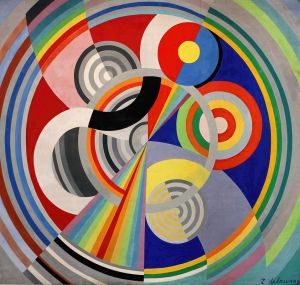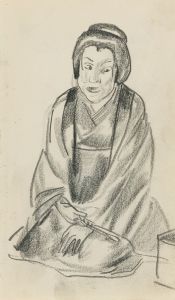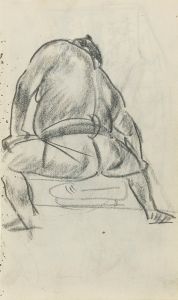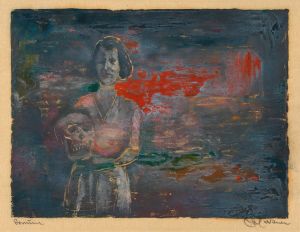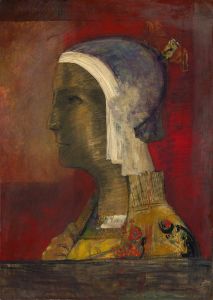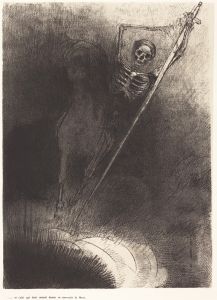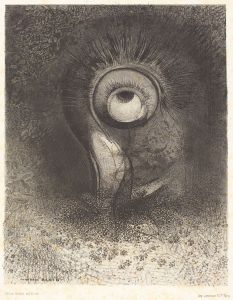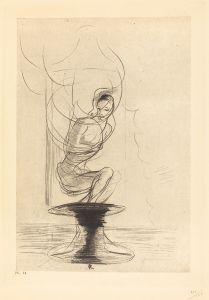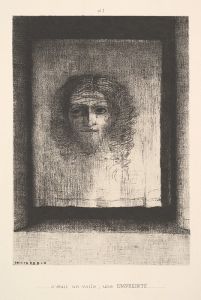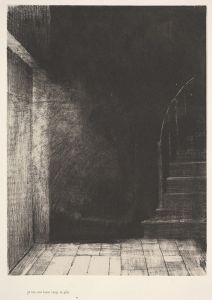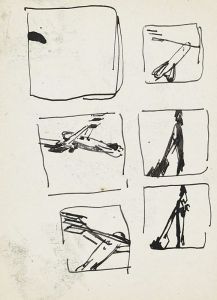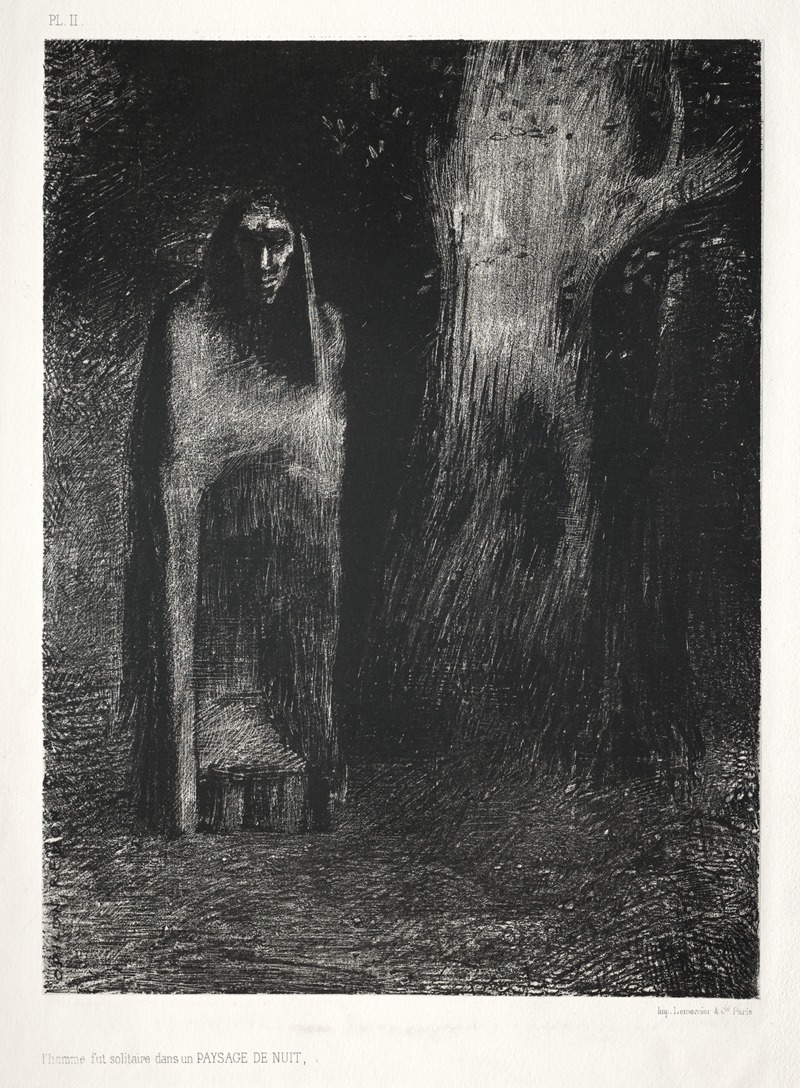
The Man Was Alone in a Night Landscape
A hand-painted replica of Odilon Redon’s masterpiece The Man Was Alone in a Night Landscape, meticulously crafted by professional artists to capture the true essence of the original. Each piece is created with museum-quality canvas and rare mineral pigments, carefully painted by experienced artists with delicate brushstrokes and rich, layered colors to perfectly recreate the texture of the original artwork. Unlike machine-printed reproductions, this hand-painted version brings the painting to life, infused with the artist’s emotions and skill in every stroke. Whether for personal collection or home decoration, it instantly elevates the artistic atmosphere of any space.
Odilon Redon was a French symbolist painter, printmaker, draughtsman, and pastellist, known for his unique and imaginative works that often explored themes of dreams, fantasy, and the subconscious. One of his lesser-known works is "The Man Was Alone in a Night Landscape," which exemplifies his distinctive style and thematic interests.
Redon was born on April 20, 1840, in Bordeaux, France, and his artistic career spanned the late 19th and early 20th centuries. He was a contemporary of the Impressionists but chose a different path, focusing on the inner world of the mind rather than the external world. His work is often associated with the Symbolist movement, which sought to express the ineffable and the mysterious through art.
"The Man Was Alone in a Night Landscape" is a painting that captures the essence of Redon's fascination with solitude and the night. The painting depicts a solitary figure set against a dark, enigmatic landscape. The use of color and light in the painting is characteristic of Redon's style, where he often employed a muted palette to evoke a sense of mystery and introspection. The night landscape serves as a backdrop that enhances the feeling of isolation and contemplation.
Redon's work is known for its dreamlike quality, and "The Man Was Alone in a Night Landscape" is no exception. The painting invites viewers to explore their own interpretations and emotions, as it does not provide a clear narrative or context. This open-endedness is a hallmark of Redon's art, allowing each viewer to engage with the work on a personal level.
Throughout his career, Redon was influenced by literature, music, and philosophy, and these influences are often reflected in his art. He was particularly inspired by the works of Edgar Allan Poe, Charles Baudelaire, and Stéphane Mallarmé, whose writings explored similar themes of the mysterious and the otherworldly. Redon's interest in the spiritual and the metaphysical is evident in his choice of subjects and his approach to composition.
"The Man Was Alone in a Night Landscape" can be seen as an exploration of the human condition, particularly the themes of solitude and introspection. The solitary figure in the painting may represent the individual's journey through the unknown, a common motif in Redon's work. The night landscape, with its shadows and obscured details, suggests the vastness and complexity of the subconscious mind.
Redon's technique often involved the use of pastels and charcoal, which allowed him to create soft, ethereal effects. This technique is evident in "The Man Was Alone in a Night Landscape," where the blending of colors and the subtle gradations of light and shadow contribute to the painting's dreamlike atmosphere.
Odilon Redon's legacy as an artist lies in his ability to transcend the boundaries of reality and explore the depths of the human psyche. His work continues to inspire and captivate audiences with its imaginative and introspective qualities. "The Man Was Alone in a Night Landscape" is a testament to Redon's unique vision and his contribution to the Symbolist movement, offering a glimpse into the enigmatic world that he so masterfully created.





